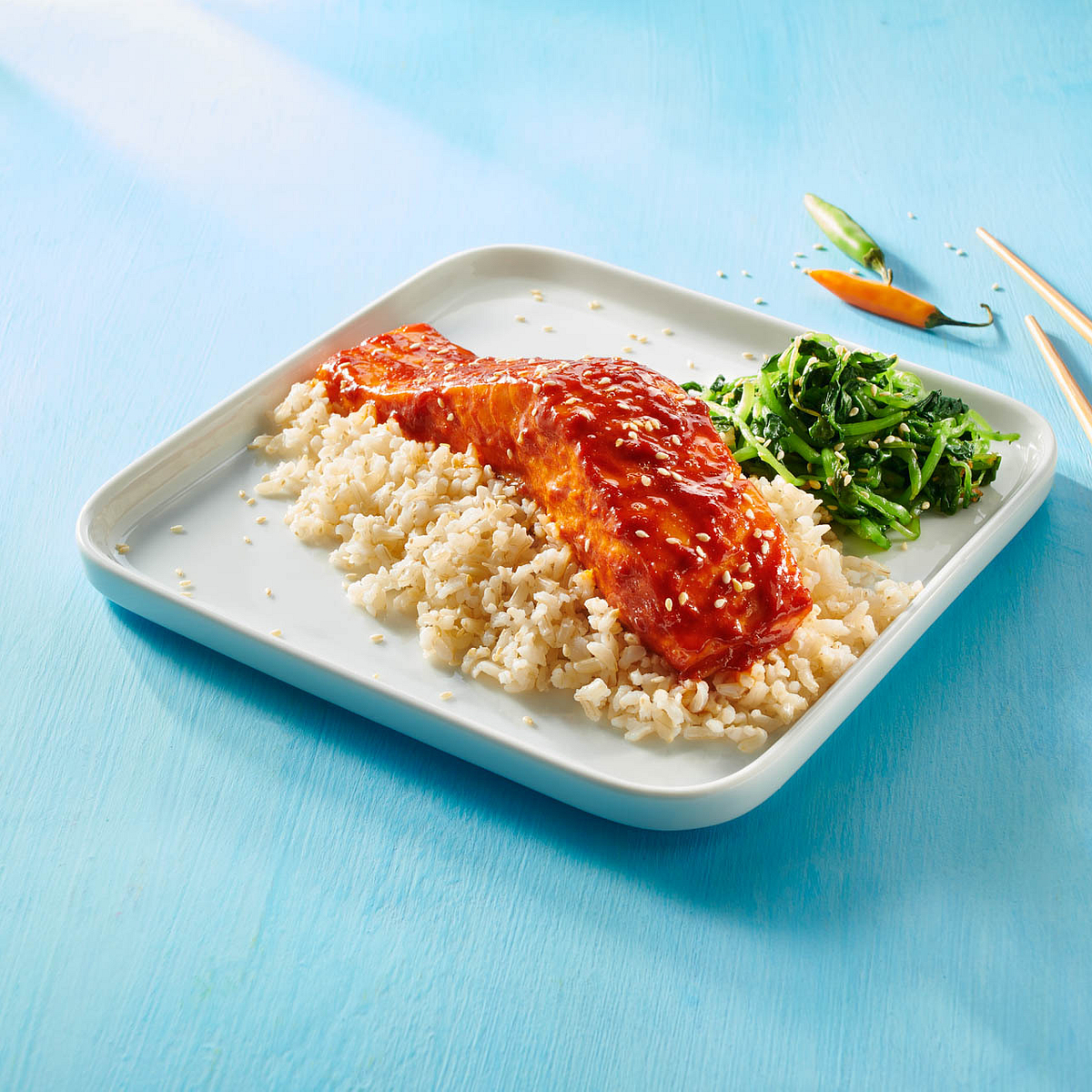Ingredients
- Main Ingredients:
Instructions
Preheat oven to 400°F. Prepare the rice according to package instructions.
While rice is cooking, in a small bowl, whisk together the gochujang paste, rice wine vinegar, ginger and olive oil until well combined. Set aside.
Bring a pot of water to a boil. Add watercress and continue to boil for 2 minutes or until the watercress is tender, but not overcooked. Drain immediately and plunge watercress into an ice water bath to stop the cooking and maintain the bright green color. Drain the watercress and roll in a clean towel to dry while making the dressing.
In a medium bowl, whisk together the garlic, soy sauce and sesame oil.
Add watercress and mix well to coat the greens with dressing.
Place salmon filets on a baking tray or ovenproof dish. Brush with the gochujang mixture, evenly coating all sides. Roast in the oven for 10 minutes (longer if the filets are more than 1 inch thick, less if they are under 1 inch thick or if you prefer salmon on the rarer side).
Serve rice with the salmon and watercress salad.
A Glazed Salmon Recipe You Can Try Today
The beauty of this dish is in its simplicity—a filet of salmon on a bed of fragrant and fluffy Jasmati® Brown Rice with a side of watercress salad to boot. What elevates the dish is the craft you put into the preparation. Here we’ve glazed the salmon with the rich and spicy gochujang sauce, a simple innovation that adds a lot of flavor to your grilled salmon recipe. Also, don’t sleep on the watercress salad that accompanies it. You’ll love the Asian-inspired sesame oil and soy sauce salad dressing. Don’t just look at your leaf salad as an obligatory side. Give it the attention it deserves, as a good side salad has the potential to take your dish to the next level. If you’re looking to learn more about the art of good salad dressing,then our guide to Tasty Salad Dressing Recipes will tell you everything you need to know.
The Art of Glazing
Glazing as a technique in cooking is quite underrated. It allows you to infuse your ingredients with additional flavors and is relatively easy to pull off. If you’re looking for a glazed vegetable recipe, then look no further. This Cinnamon Coffee Seared Skirt Steak with Glazed Carrots recipe is the perfect example of how glazed roast vegetables—in this case, the humble carrot—make for the ideal accompaniment to this rich steak recipe served with RiceSelect® Royal Blend®. The glazing in this recipe couldn’t be easier. All you need is a little maple syrup to sweeten your roast vegetables and, as a result, elevate the dish.
Likewise, in this recipe for glazed cod, the glazing effect is achieved using toyomansi sauce. It’s a simple measure to take, but it goes a long way.
The Best Sauces to Use for Glazing
The sauce or mix you use for glazing will depend on your own preferences and what particular food you want to glaze. One thing they should all have in common is a sweet touch. Here are some examples of everyday ingredients that can be used for glazing meats, fish, and roasted vegetables.
- Honey
- Maple Syrup
- Agave
- Sweet or Honey Mustard
- Brown Sugar
Asian Sauces Suitable for Glazing
As seen in our featured recipe, some classic Asian sauces are also great for adding that extra flavor kick your meat, fish, or roast vegetable recipe needs. Not only do they sweeten the ingredients, but many of them also add a little spice to the proceedings. Here are a few you might like to experiment with:
- Sriracha
- Teriyaki
- Hoisin Garlic
- Toyamansi
- Gochujang

